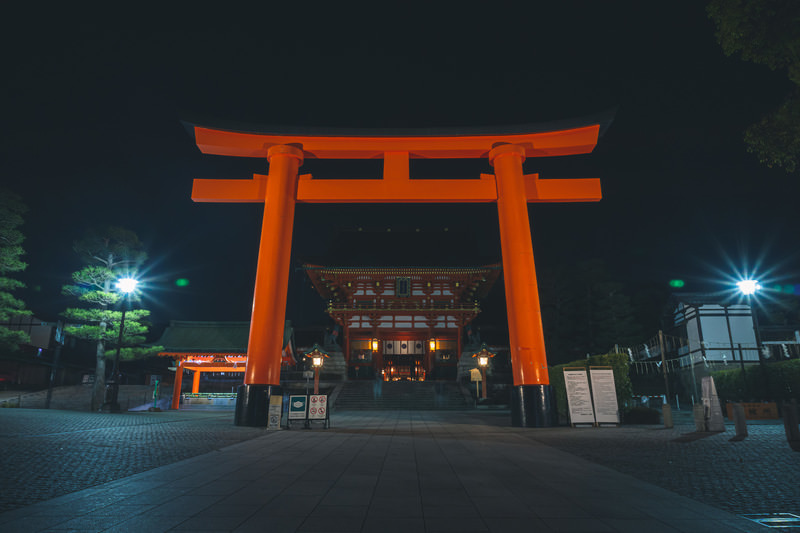What is a Torii?
A torii gate is a traditional Japanese structure that marks the entrance to a sacred space, most often a Shinto shrine.
Passing through a torii means moving from the everyday, secular world into a spiritual realm.
With their striking vermilion color and elegant shape, torii are one of the most iconic symbols of Japan.
History and Meaning
The origins of torii are not entirely clear, but they have been part of Japanese religious culture for centuries.
The word "torii" is often translated as "bird perch," though its exact roots are debated.
In Shinto belief, the torii acts as a boundary, separating the human world from the domain of the kami (deities).
Types of Torii
Torii gates come in several distinct styles:
-
Shimmei Torii (神明鳥居) – Simple, straight lintels.
-
Myojin Torii (明神鳥居) – Elegant, with slightly curved lintels.
-
Ryobu Torii (両部鳥居) – Thick, heavy design influenced by Buddhist traditions.
-
Floating Torii – Famous examples like Itsukushima Shrine’s torii, standing dramatically in the sea.
Colors and Symbolism
-
Vermilion (red-orange)
The most common, symbolizing protection against evil and purification. -
Black
Sometimes seen at shrines dedicated to powerful deities, representing strength and authority. -
Stone or unpainted wood
Suggest timelessness and connection to nature.
Materials
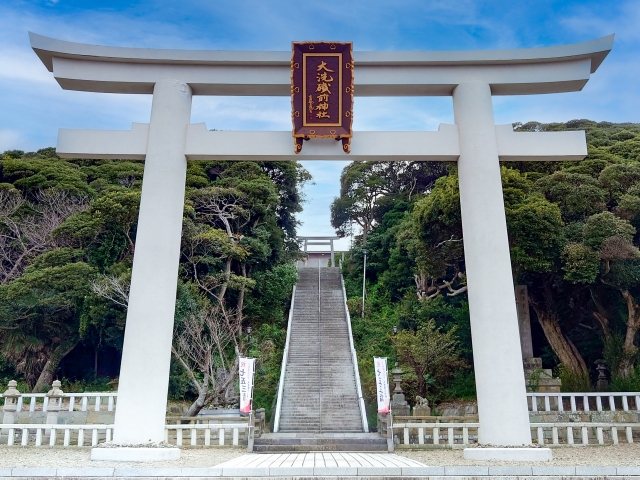
Traditionally, torii were built of wood and painted with protective coatings.
Over time, stone became common at larger or wealthier shrines.
In modern times, steel and concrete torii also exist, ensuring durability while preserving the traditional form.
Famous Torii in Japan
Itsukushima Shrine (Hiroshima)

The “floating torii” that appears to rise from the sea.
Fushimi Inari Taisha (Kyoto)
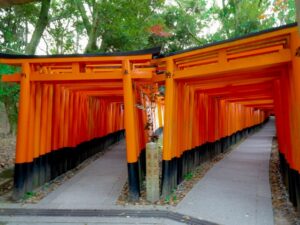
Thousands of vermilion torii forming breathtaking tunnels.
Rituals and Etiquette
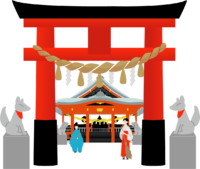
When passing through a torii, it is customary to bow once before entering and once again after leaving.
Visitors should walk slightly to the side, leaving the center pathway symbolically open for the kami.
How to Pass Through a Torii Gate
Entering the Shrine
-
Stand still in front of the torii.
-
Bow once at about a 15-degree angle.
-
Walk through the gate.
Leaving the Shrine
-
Walk back through the torii.
-
Turn toward the shrine.
-
Bow once.
-
Turn again and leave.
When leaving, the bow should be made after passing through the torii.
Special Note: When You Cannot Pass Through

In Japanese tradition, there are times when you should not pass through a torii.
One example is during mourning (忌中, kichū), the 50-day period after the death of a close relative.
During this time, entering a shrine is considered inappropriate.
Are These Practices Religious?
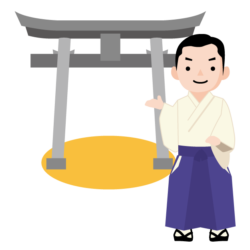
These manners are not strict religious obligations, but rather cultural traditions and etiquette.
Even Japanese people who are not religious follow them naturally when visiting shrines, such as during New Year’s visits, weddings, or seasonal festivals.
For visitors, performing these gestures is a way of showing respect for the place and its traditions, rather than an expression of personal faith.
Torii in Modern Culture
Beyond their religious meaning, torii have become cultural icons.
Miniature versions appear as charms, and images of torii are widely used in Japanese art, travel photography, and pop culture.
They remain a powerful reminder of Japan’s spiritual heritage and aesthetic beauty.

